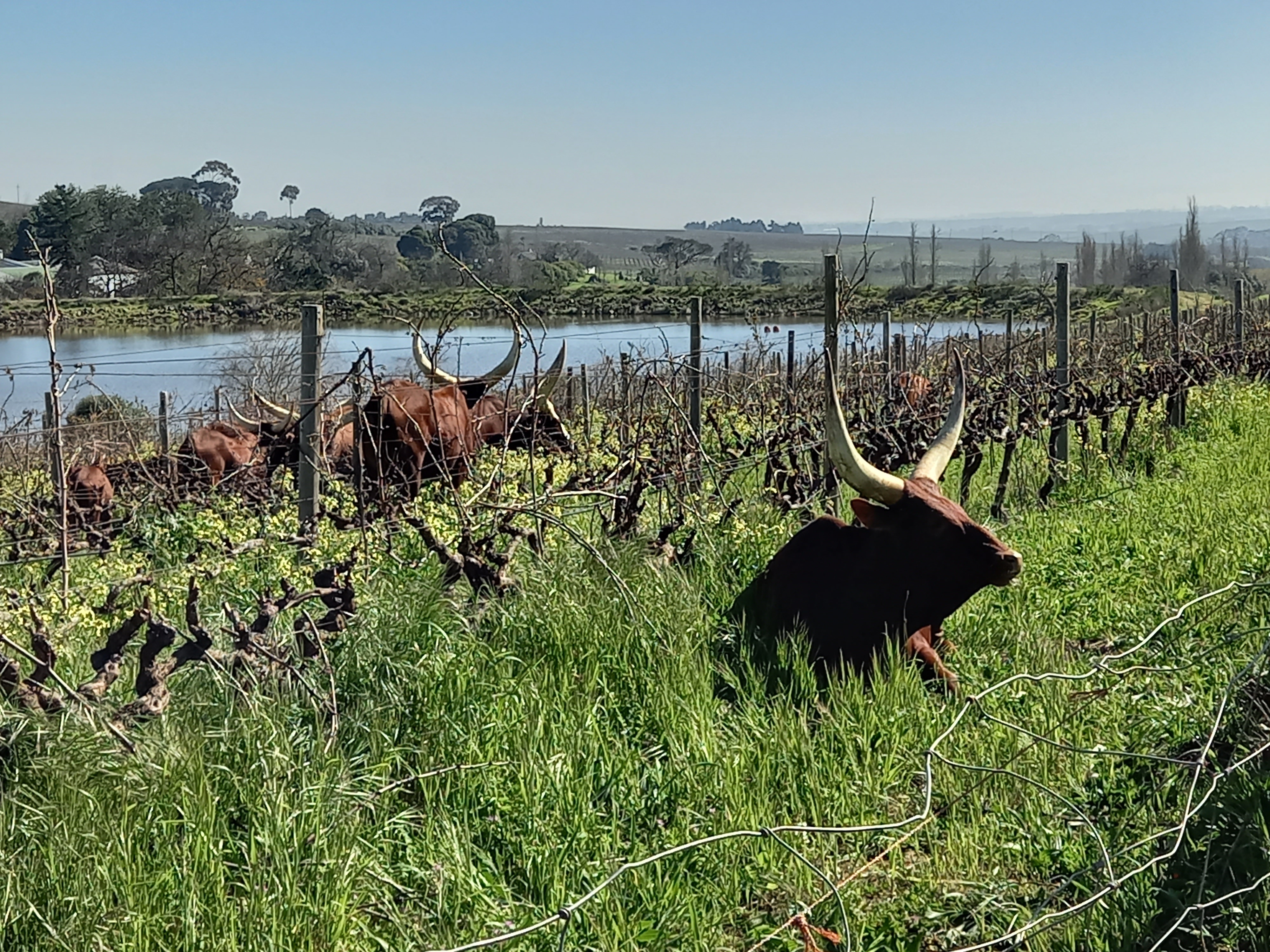Constantia is the cradle of South African wine. Simon van der Stel’s sojourn at Groot Constantia has been documented. Less well documented has been the journey of organics.
It’s startling to recall that only 20 years ago organics was something of a dirty word for wine producers. It was held to be the preserve of the hairy-legged, lentil eating set… Farmers did what they had always done as part of their annual vineyard programme – and that was to spray herbicides, pesticides and to chemically induce vine shutdown during winter.
Driving through the local winelands, Franschhoek, Robertson, Stellenbosch, Paarl or wherever, you seldom see a naked, exposed soil row between vines nowadays – but that used to be commonplace. Today, cover crop is key. It prevents moisture loss, it returns vegetation and carbon to the soil, it mulches the area. What was considered ‘lunatic fringe’ not so long ago has become something almost everyone does by rote, simply because it’s been shown to work and deliver solid benefits for the soil, for the vine and ultimately for the resultant wine. The worm has indeed turned!
It’s difficult to pin down when organics first started to become part of the wine dialogue locally. However, the trusty Platter Guide provided some assistance. Like this from 1990, the 10th edition of the book describing the events at Buitenverwachting. “Owner Christine Müller’s commitment to organic farming, unusual in winelands worldwide and particularly in the Cape, resulted in some recent management changes at the property: staff uncomfortable with this approach in the vineyards have now moved on, and German-trained cellarmaster Jean Daneel has stepped into the breach. This looks to be a happy solution, with built-in benefits for his winemaking. His ‘89s are terrific, and perhaps part of the reason is because “I’ve got a better idea of each vineyard’s personality – I know from watching the grapes and constantly tasting berries out in the vineyard just before harvest what flavours and condition they’ll present in the cellar.” He’s been on an extensive European tour to study organic farmin _ and sees merits and benefits he didn’t appreciate before. “Though he still remains fairly sceptical about some ‘crankier’ practices.) A 9-hectare plot of sauvignon blanc and chenin blanc in the middle of the farm has been set aside for such experiments – no insecticides or sprays except traditional European copper and sulphur “bordeaux mixture” and there have been interest “surprisingly good” results. But the rest of the vineyards are also progressively moving closet to an organic programme. For example, no artificial fertiliser is used at all –only compost, and general pesticide spraying is no longer undertaken on the usual prophylactic basis.”
The next producer to really make headlines for their nature-focussed approach was renowned cap classique producer, Villiera. Simon Grier made a solid case for the environment – and the property remains at the forefront of ethical and eco-conscious practices to this day.
Yet as difficult as it is to put a pin into when, where and who the pioneers truly were, most wine geeks will point to Johan Reyneke of Reyneke Wines taking a principled stance around the millennium.
As the Platter Guide wrote in 2002: “Their eco-efficient practices are no token nod at marketing dictates; rather a heartfelt and lived-in philosophy (“a paradigm shift in thinking that promotes life,” is how environmental philosophy postgrad Johan Reynek succinctly puts it). They’ve hauled in the local forestry department to measure biodiversity in the vineyards – well, whatever survives hunter-cat Marley’s advances – and comprehensive plans involve planting indigenous ‘wildlife’ corridors.”
Similarly on the biodynamic front Avondale were for many years the only Rudolf Steiner proponents on the local scene. Platter 2005 wrote: “The first small crop of organically farmed shiraz – showing ‘individual character’ – augurs well for this winery on Paarl’s Klein Drakenstein slopes. There’s nothing faddish about the Grieve family’s commitment to organic farming: their business background lies in a well-known health product range.”
A year later, the same guide wrote: “There’s a push for biodiversity certification, hence the practice of organic viticulture in all new vineyards. Viticulturist Johnathan Grieve is also reintroducing fynbos between the rocky vineyard rows, interspersing it with organic soil cover, insect-repelling/attracting plants and nitrogen-rich cover crops.”
They have subsequently been joined by Waterkloof, Spier, Radford Dale and many more. Lately, the scuttlebutt has been about regenerative agriculture and the multitude of benefits for the soil. After all, everything comes down to soil. Does it truly matter who the pioneers were or when it all began – or is it perhaps a question of are we doing enough, quickly enough? Clearly there’s broad acceptance of the benefits.
Fiona McDonald
Caption: Resting comfortably in a vibrant swathe of green cover crop, one of Hartenberg’s Onkole cattle, part of their ongoing regenerative farming journey.
